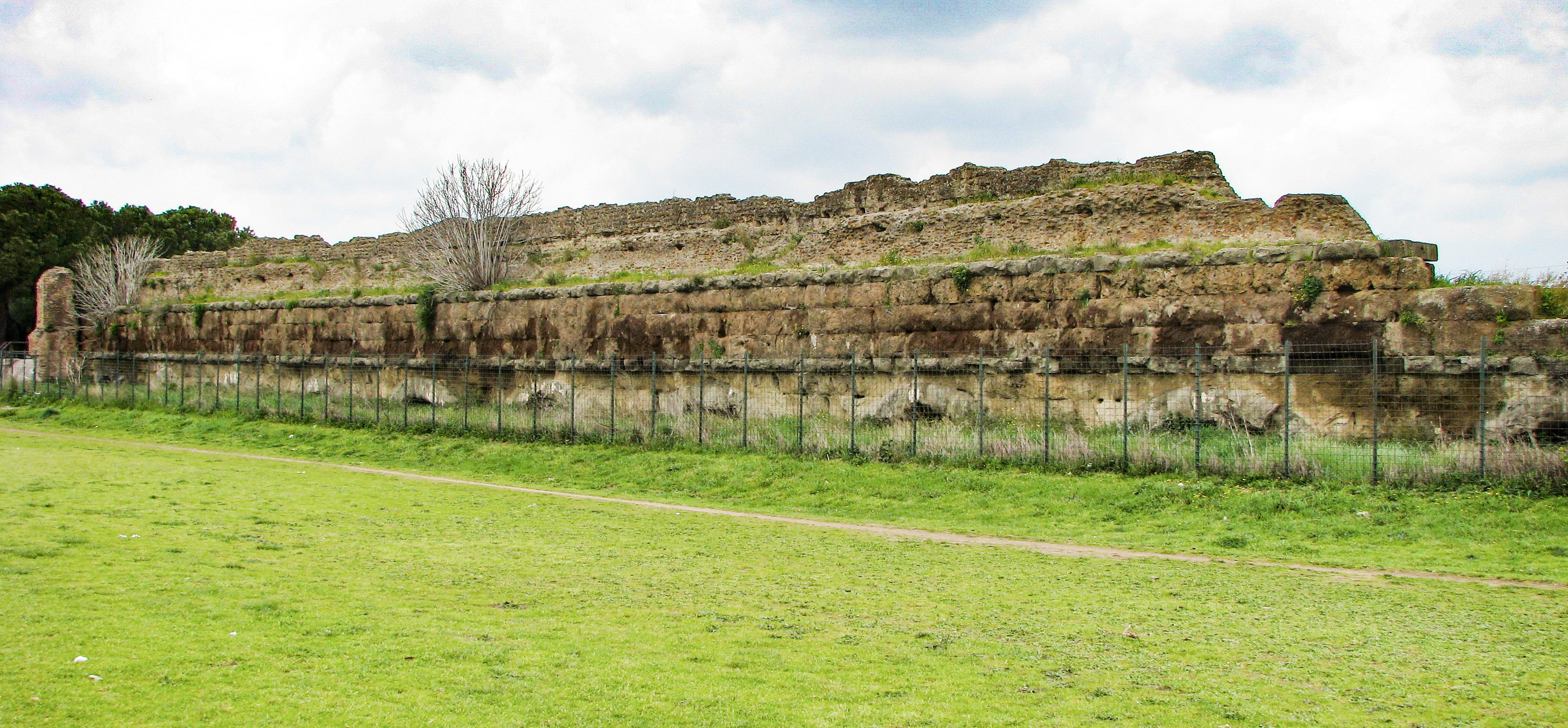Aqua Tepula on:
[Wikipedia]
[Google]
[Amazon]

 The Aqua Tepula is an ancient
The Aqua Tepula is an ancient
 Its source was at the volcanic area of the Alban hills on the estate of
Its source was at the volcanic area of the Alban hills on the estate of
''De Aquis''
The Roman Aqueducts
{{Authority control Tepula

Roman aqueduct
The Romans constructed aqueducts throughout their Republic and later Empire, to bring water from outside sources into cities and towns. Aqueduct water supplied public baths, latrines, fountains, and private households; it also supported mining o ...
completed in 125 BC by censors Gnaeus Servilius Caepio, who had served as consul in 141 BC, and Lucius Cassius Longinus Ravilla.
The water from the Aqua Tepula was, as implied in the name, lukewarm at 16–17 °C at the springs and perhaps due to the sulphurous content was, as Frontinus states, originally not fit for human consumption.
The original daily flow was very low and barely reached 190 quinariae (about 8000 m3 per day).
Route
 Its source was at the volcanic area of the Alban hills on the estate of
Its source was at the volcanic area of the Alban hills on the estate of Lucullus
Lucius Licinius Lucullus (; 118–57/56 BC) was a Roman general and statesman, closely connected with Lucius Cornelius Sulla. In culmination of over 20 years of almost continuous military and government service, he conquered the eastern kingdom ...
, between today's municipalities of Grottaferrata and Marino, a mere 18 km from Rome
, established_title = Founded
, established_date = 753 BC
, founder = King Romulus (legendary)
, image_map = Map of comune of Rome (metropolitan city of Capital Rome, region Lazio, Italy).svg
, map_caption ...
.
Until the Augustan era the aqueduct flowed along an underground route from source to terminus.
In 33 BC, Agrippa Agrippa may refer to:
People Antiquity
* Agrippa (mythology), semi-mythological king of Alba Longa
* Agrippa (astronomer), Greek astronomer from the late 1st century
* Agrippa the Skeptic, Skeptic philosopher at the end of the 1st century
* Agri ...
modified the aqueduct concurrently with the construction of the Aqua Julia
The Aqua Julia (or Iulia) is a Roman aqueduct built in 33 BC by Marcus Vipsanius Agrippa, Agrippa under Augustus to supply the city of Rome. It was repaired and expanded by Augustus from 11–4 BC.
Route
The source of the Aqua Iulia is ...
and added 92 quinariae of water flow from the Julia. The conduit was made to join the newly built one for Julia until it reached the current locality of Capannelle near the Aqua Marcia
The Aqua Marcia ( it, Acqua Marcia) is one of the longest of the eleven aqueducts that supplied the city of Rome. The aqueduct was built between 144–140 BC, during the Roman Republic. The still-functioning Acqua Felice from 1586 runs on long ...
where there was a ''limaria'' pool (settling basin) and by which time the water had cooled.
The water was then split again (for an unexplained reason) into two conduits for the Tepula and the Julia, the Tepula being the highest, superimposed on arches of the Marcia, for the remaining 10 km. They reached the city at ''ad spem veterem'', near Porta Maggiore.
From here on the conduit used the Aurelian Walls and crossed Via Tiburtina on an arch which became Porta Tiburtina
Porta Tiburtina or Porta San Lorenzo is a gate in the Aurelian Walls of Rome, Italy, through which the Via Tiburtina exits the city.
History
The gate originally was an arch, built under Augustus, in the point in which three aqueducts (Aqua M ...
. The route passed the Viminal
The Viminal Hill ( ; la, Collis Vīminālis ; it, Viminale ) is the smallest of the famous Seven Hills of Rome. A finger-shape cusp pointing toward central Rome between the Quirinal Hill to the northwest and the Esquiline Hill to the southeast ...
gate, where Termini Station stands today, and ended near the Porta Collina, where the main distribution ''castellum
A ''castellum'' in Latin is usually:
* a small Roman fortlet or tower,C. Julius Caesar, Gallic War; 2,30 a diminutive of ('military camp'), often used as a watchtower or signal station like on Hadrian's Wall. It should be distinguished from a ...
'' was, near the current Via XX Settembre. It passed through 14 ''castella divisorum'' delivering water to four regions.
Later another 163 quinariae of water,Frontinus, de aq. ii. 68 derived from the future Anio Novus aqueduct (built around 50 AD), were added at the ''horti Epaphroditiani'' on the Esquiline hill for a final overall total, upon distribution, of 445 (190+92+163) quinariae (18,467 m3, about 200 litres per second), still a scant amount in Roman times.
See also
*Ancient Roman technology
Roman technology is the collection of antiques, skills, methods, processes, and engineering practices which supported Roman civilization and made possible the expansion of the economy and military of ancient Rome (753 BC – 476 AD).
The Roma ...
* List of aqueducts in the city of Rome
* List of aqueducts in the Roman Empire
* List of Roman aqueducts by date
* Parco degli Acquedotti
* Roman engineering
The ancient Romans were famous for their advanced engineering accomplishments. Technology for bringing running water into cities was developed in the east, but transformed by the Romans into a technology inconceivable in Greece. The architecture ...
References
Citations Sources * * Frontinus''De Aquis''
External links
The Roman Aqueducts
{{Authority control Tepula